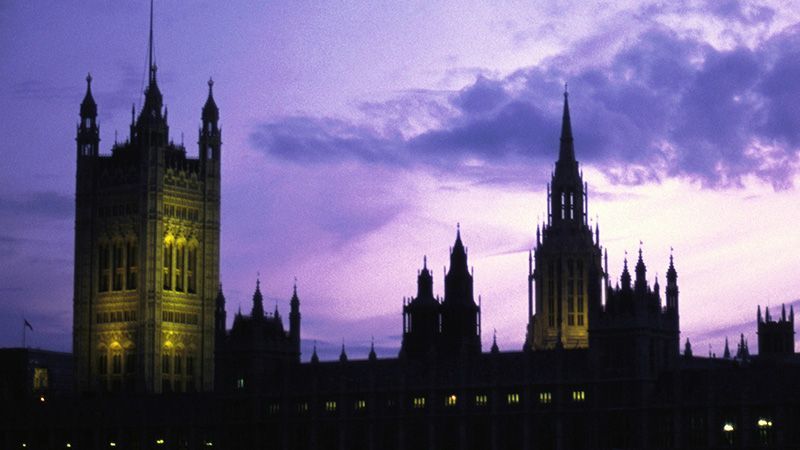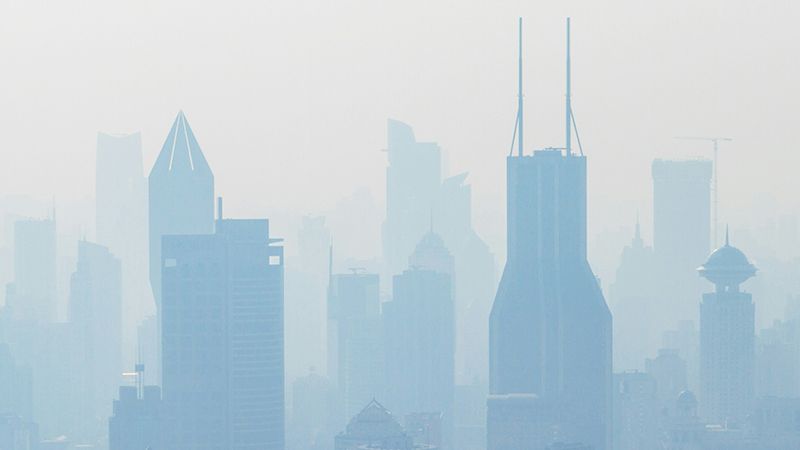A Sustainable Future for Megacities?
- There were only 2 megacities globally in 1950.
- Currently, there are 34, and this number is projected to reach 43 by 2030.
- Megacities are expected to house 70% of the world's population by 2050.
According to the World Bank, 56% of the world's population, about 4.4 billion people, currently reside in urban areas. By mid-century, this number is expected to increase to 7 in 10 people.
As a result, cities are responsible for 70% of global energy consumption and 67-72% of carbon dioxide emissions. In addition, this ongoing shift toward urbanisation has led to the creation of megacities, which, due to their size, create both distinct environmental problems and solutions.
Cities and NDCs
Despite the number of climate-related disasters tripling in the last 30 years, causing rising death tolls, mass migrations and billions of dollars in damages, the majority of governments continue to miss the crucial role that cities play in achieving a net-zero future.
Many Nationally Determined Contributions (NDCs) explicitly reference urban strategies for both mitigation (e.g., reducing emissions from energy and transport) and adaptation (e.g., enhancing resilience to climate hazards like flooding).
As the role of cities comes under renewed scrutiny, we have taken the opportunity explore the relationship between megacities and climate change, and the potential for mitigating these impacts through sustainable urban planning and technological innovations.
We also discuss the importance of addressing social inequalities and promoting community participation in addressing urban challenges.
What is a Megacity?
Megacities, defined as urban areas with populations exceeding ten million, are increasingly common, particularly in developing countries. They offer economic opportunities but also pose significant environmental challenges, such as air and water pollution, resource scarcity, and rising temperatures.
The Top Five Megacities
As you can see from the table below, the top five megacities, ranked by population size, differ significantly in terms of GDP per capita and technological maturity (as per the Digital Cities Index):
These varying factors lead to a complicated picture when we assess the role of megacities and climate change. While some of the categories in this table contribute significantly more to climate impact than others—some offer distinct advantages that will help to offset emissions before 2050.
In order to better understand the interplay of these factors, let’s first look at the contributions of Population Size and Density.
Population Size: the Biggest Driver of CO2
Population size is generally considered the primary driver of total CO2 emissions in cities. According to studies, there is a near 1:1 relationship between population size and CO2 emissions, meaning that as population increases, emissions also increase proportionally.
For example, the 50 largest cities globally emit about 2,600 megatons of CO2 annually, which is more than some entire countries, like Russia or Japan.
Additionally, in rapidly growing megacities (particularly in Asia), population growth rates can reach 4% per year, while emissions growth can be as high as 10% per year.
Density: Pros & Cons
Population density offers potential savings in terms of reducing emissions per capita by enabling more efficient infrastructure and shorter transport distances.
Research shows that a 1% increase in population density can lead to a 0.79% reduction in CO2 emissions per capita, primarily due to more efficient transportation networks and energy use.
High density can also lead to increased energy demand for buildings (heating/cooling) and waste management challenges. In urban slums, where a high population density is served by poor infrastructure and a lack of waste management and planning, there is exacerbated pollution and resource strain.
The relationship between population size and density is complex and is perhaps best understood on a case by case basis. While larger populations inherently produce more emissions, higher density can mitigate some of these effects by promoting more efficient urban infrastructure.
A study in Nature Sustainability examining 120 major cities found that improving public transport systems and increasing urban density could reduce transport-related CO2 emissions by up to 31% over 15 years.
Tokyo Case Study
Tokyo is the most populated city in the world, but it has the second lowest density on our list; and it is ranked first for GDP per capital, GMP, and the Digital Cities Index.
Tokyo boasts advanced smart systems like real-time sensor and camera-based traffic management and innovative energy-efficient building codes. Similar to Berlin, Tokyo is committed to reducing greenhouse gas emissions by 80% by 2050.
To achieve this, the city has made ambitious pledges in its comprehensive Zero Emission Tokyo Strategy, which aims to achieve net-zero CO2 emissions by 2050.
Tokyo is focusing heavily on urban infrastructure and green energy to reduce emissions:
- By 2050, all buildings in Tokyo are expected to be zero-emission buildings, with energy efficiency measures and renewable energy use integrated into their design.
- In transportation, Tokyo aims to have 50% of new passenger cars as ZEVs by 2030, with a long-term goal of making all vehicles zero-emission by 2050. The city is also investing in ZEV infrastructure, including fast chargers and hydrogen stations.
- Tokyo is committed to expanding renewable energy use, with a target of 50% renewable electricity by 2030.
Local Impact of Megacities
The current global rallying call for environmental action, following the Paris Agreement, prioritises action to reduce greenhouse gas emissions to avoid catastrophic climate events. But there are many other local environmental effects from megacities that affect biodiversity, deforestation, pollution, and other factors that have a knock-on effect on climate change.
Here are some key environmental impacts:
Air Pollution: Cities like Beijing and Delhi experience air pollution levels that often exceed World Health Organisation (WHO) recommendations.
Water Pollution and Scarcity: The rapid growth of megacities often leads to water pollution and scarcity. For instance, Mexico City faces significant challenges with water supply due to its location on a lakebed, leading to subsidence and limited access to clean water.
Heat Island Effect: Urban areas in megacities tend to be warmer than their rural surroundings due to human activities and infrastructure, a phenomenon known as the heat island effect.
Waste Management: The sheer volume of waste generated in megacities poses significant challenges for waste management systems, often leading to environmental contamination if not properly managed.
Impact on Biodiversity: The expansion of megacities often leads to habitat destruction and fragmentation, impacting local biodiversity. This urban sprawl can encroach on natural areas, reducing habitats for wildlife.
These environmental impacts highlight the urgent need for sustainable urban planning and management strategies in megacities to mitigate adverse effects on both local and global environments.
Future Megacities: Neom
Neom is designed to be a futuristic megacity that spans 26,500 square kilometres, an area roughly 33 times the size of New York City. The project has a budget of $500 billion and aims to house upwards of 10 million people in its various regions. At the heart of this development is ‘The Line’, a 170-kilometre-long linear city that will be entirely car-free and powered by renewable energy sources like solar and wind.
Neom's sustainability vision is unparalleled in its scope and ambition. Here are some key aspects that make it a potential blueprint for future sustainable cities:
- 100% Renewable Energy: Neom aims to be powered entirely by renewable energy by 2030, leveraging its unique solar and wind resources. The city will also host one of the world's largest green hydrogen plants, which will provide clean energy for both industrial and residential use.
- Zero Carbon Emissions: ‘The Line’ will operate with zero carbon emissions, eliminating the need for cars and traditional road networks by using autonomous electric vehicles and high-speed transit systems. This focus on clean transportation could drastically reduce pollution and congestion.
- Circular Waste Management: Neom plans to recycle 100% of its wastewater, using it for agriculture, landscaping, and energy production through biogas. This closed-loop system aims to minimise waste and prevent pollution.
- Biodiversity Preservation: Over 95% of Neom's land will remain untouched, preserving natural ecosystems while integrating urban development with green spaces. This approach prioritises habitat conservation alongside urban expansion.
Neom’s influence on future urban development could be profoundly influential, as it aims to redefine how cities are built, operated, and lived in.
Bristol Case Study: Successful Public-Private Partnerships
Although far from a megacity, Bristol in the UK offers a prime example of successful public-private partnerships (PPPs) to boost funding for sustainable initiatives in urban planning. The Bristol City Leap initiative focuses on achieving city-scale decarbonisation by installing low carbon energy infrastructure, primarily funded and delivered by the private sector. The goal is for the JV to attract £1bn in investment over the partnership’s duration, with at least £42m committed by 2027. This level of funding would have been difficult for the city to achieve through public sources alone. The private sector involvement allows cities to undertake ambitious projects without overburdening public finances.
Megacities should likewise aim to form similar public-private partnerships to fund city-wide infrastructure projects. PPPs can help cities accelerate their sustainability progress by leveraging private sector expertise in technology and project management. Furthermore, these schemes generate jobs and economic growth, and allow risk to be shared among public and private ventures.
Conclusion
As this article has explored, megacities are complex entities with a significant impact on the global environment. While they present considerable challenges, they also offer an unparalleled opportunity to pioneer innovative solutions for a sustainable future. COP29 represents a pivotal moment to acknowledge the vital role of cities in achieving climate goals and to translate commitments into concrete action.
The lack of comprehensive urban focus in many national climate plans is a concerning trend. Governments must move away from a siloed, sector-specific approach and recognise cities as integrated systems capable of driving transformative change. The success of city-led initiatives in Freetown, Bogotá, and Seoul, alongside ambitious projects like Neom, demonstrates the power of urban innovation to address pressing environmental challenges. These initiatives highlight the potential of cities to reduce emissions, enhance resilience, and create a more sustainable and equitable future for their residents.
However, these examples represent just a fraction of what is possible. The scale of the climate crisis demands a collective, global effort. This is where organisations like Cambridge Management Consulting, with their expertise in sustainability, retail, property, and manufacturing, have a crucial role to play.
By partnering with megacities and governments, Cambridge Management Consulting and edenseven can provide the strategic guidance, innovative solutions, and implementation support needed to accelerate the transition to a low-carbon, climate-resilient future. Our public sector expertise can also be leveraged to create and foster public-private partnerships, to drive funding for large-scale sustainability projects that support a long-term vision.
Select References: [1] https://eventscustom.economist.com/navigating-the-concrete-jungle-insight-hour/ [2] https://www.futuresplatform.com/blog/scenarios-future-megacities-urbanisation [3] https://ui.adsabs.harvard.edu/abs/2012EGUGA..14.8846G/abstract [4] https://www.arabnews.com/node/2495731 [5] https://populationconnection.org/blog/megacities-population-growth-climate-change/ [6] https://www.iberdrola.com/sustainability/megacities-urban-area [7] https://www.oxfordeconomics.com/resource/rise-of-new-megacities-will-drive-global-urban-growth/ [8] https://www.weforum.org/stories/2016/01/what-will-it-be-like-to-live-in-a-megacity-in-2100/
Other Sources:
1. The Economist Impact: "Navigating the Concrete Jungle" – Insight into sustainable urbanization challenges today that can be extrapolated into future trends.
2. Futures Platform: "Four Scenarios on the Future of Megacities" – Detailed scenarios that outline potential futures for megacities based on current trends.
3. Population Connection: "Megacities, Megarisks" – Focuses on how population growth exacerbates climate vulnerabilities in developing-world megacities.
4. Iberdrola: "Megacities' Definition and Characteristics" – Highlights key sustainability challenges faced by future megacities along with innovative solutions.
5. Arab News: "Solving Urban Challenges in the 22nd Century" – Discusses urban planning challenges specific to developing countries with a focus on vertical cities.
6. Oxford Economics: "Rise of New Megacities Will Drive Global Urban Growth" – Provides forecasts on population growth trends across major global cities up until 2050.
Contact - AI at the Edge article
Subscribe to our insights
Blog Subscribe












